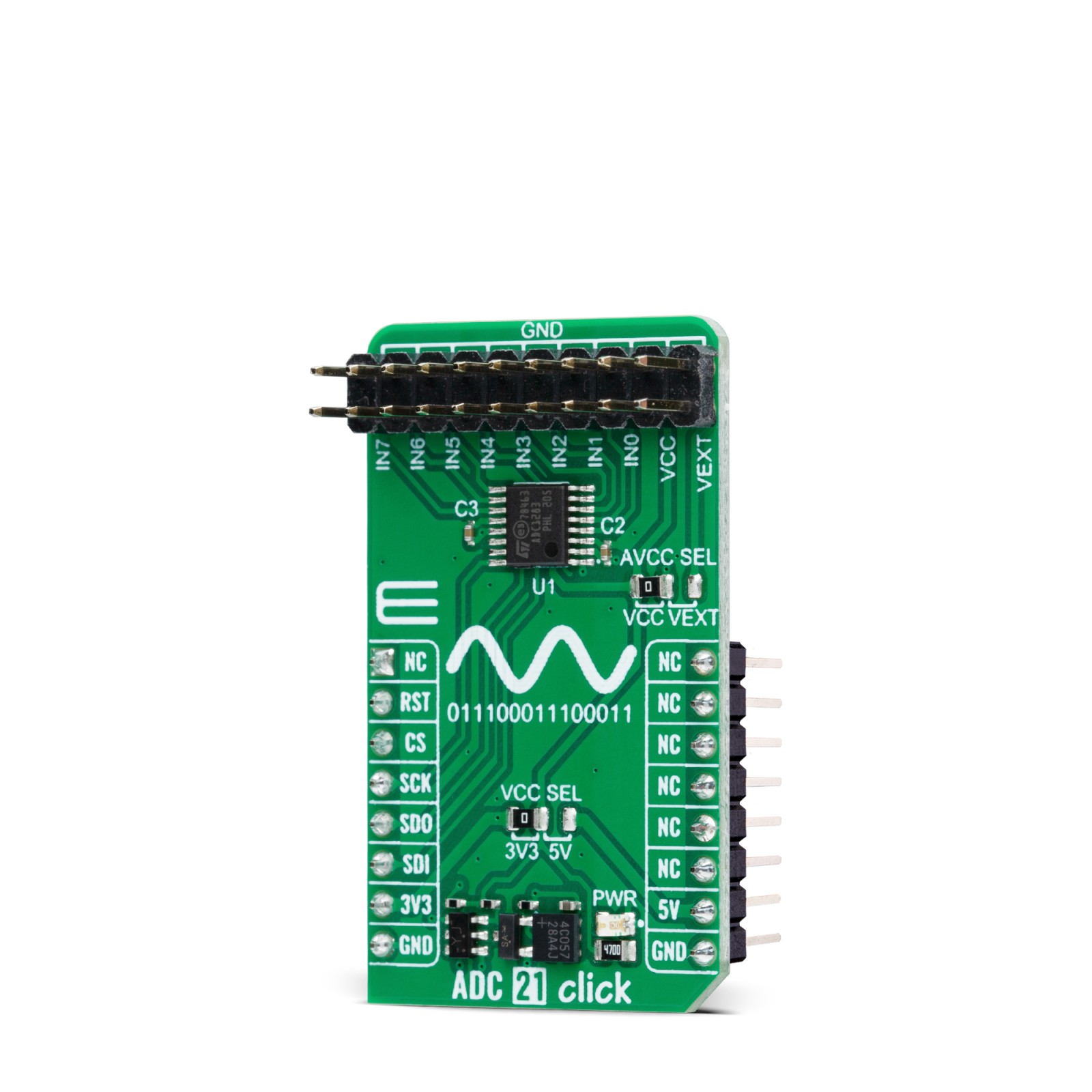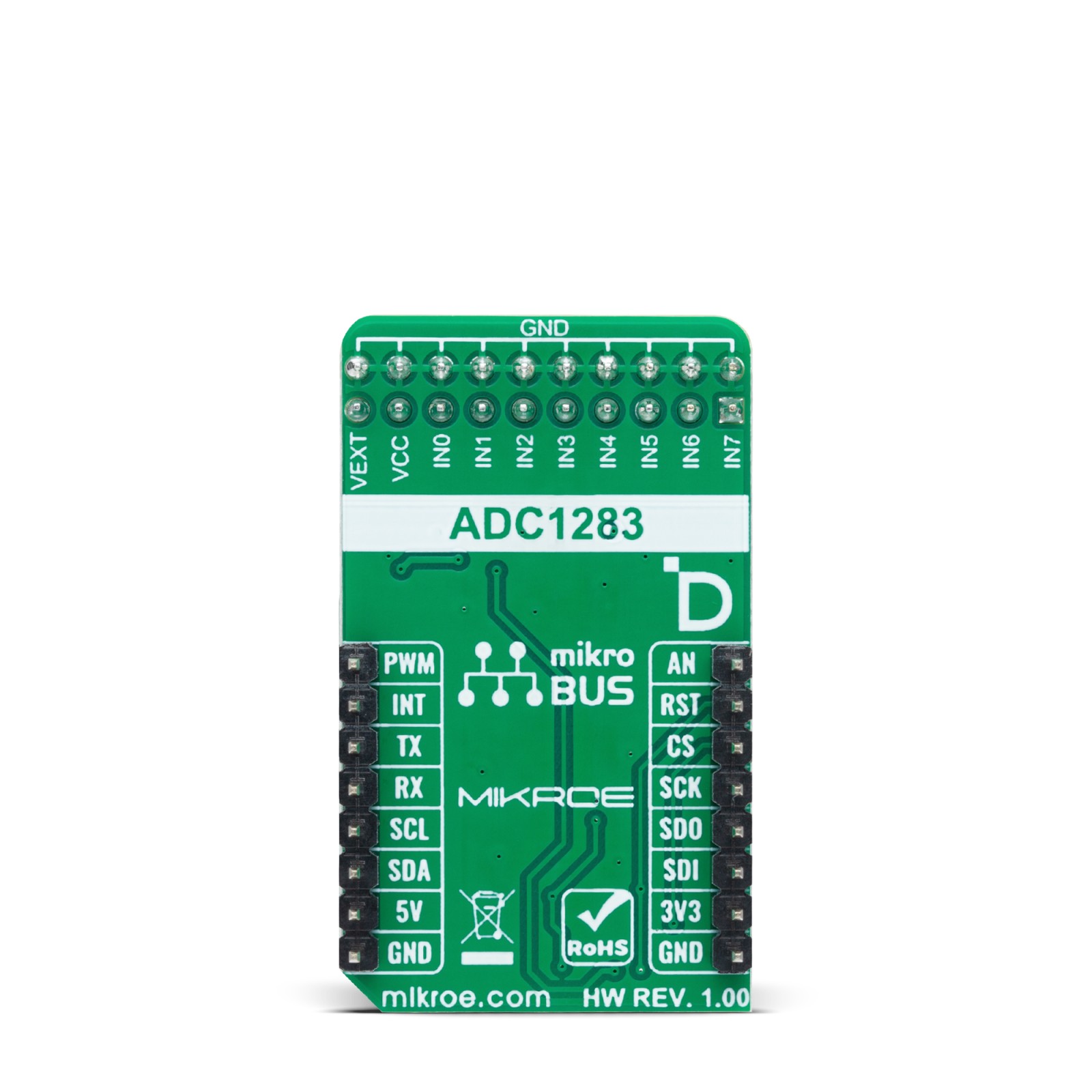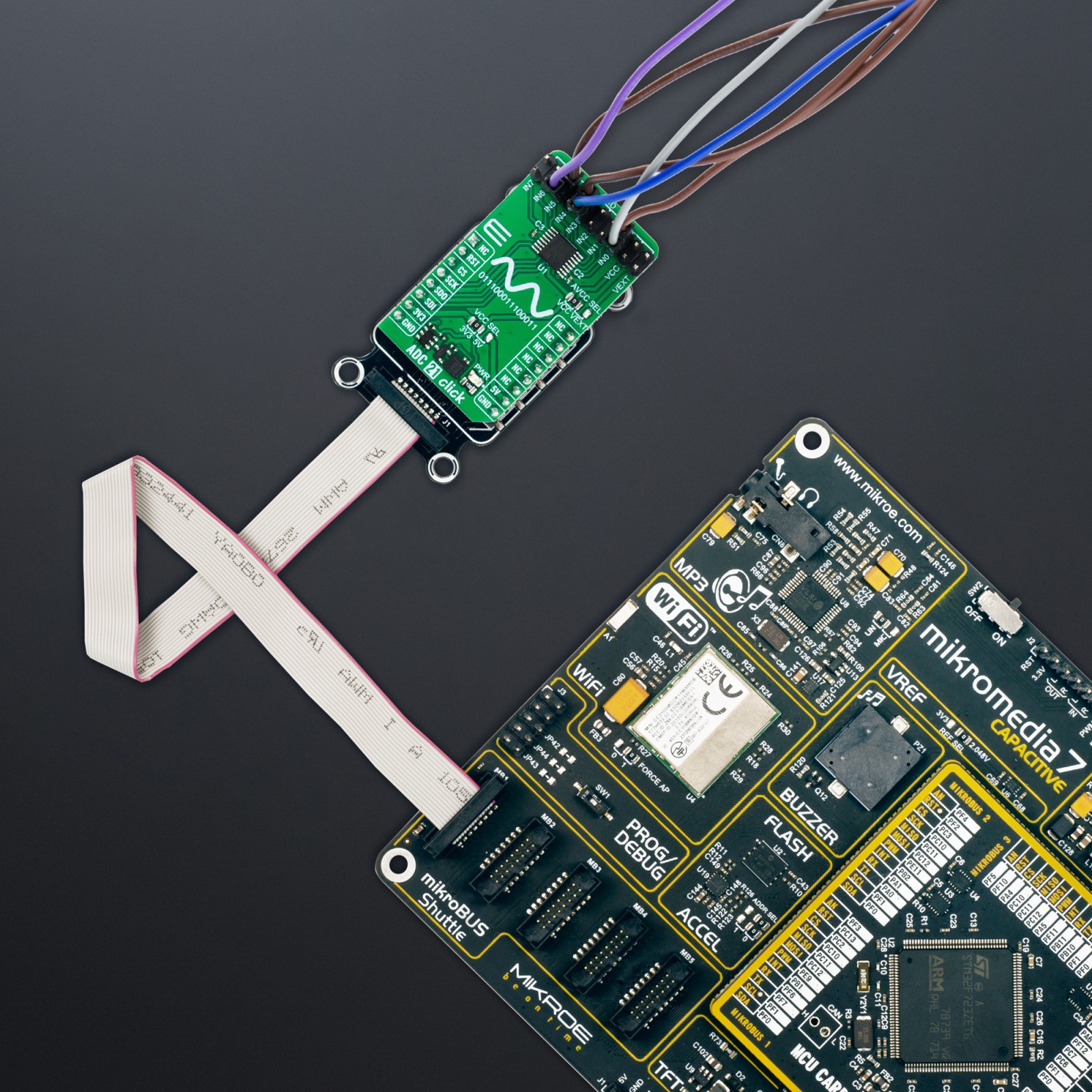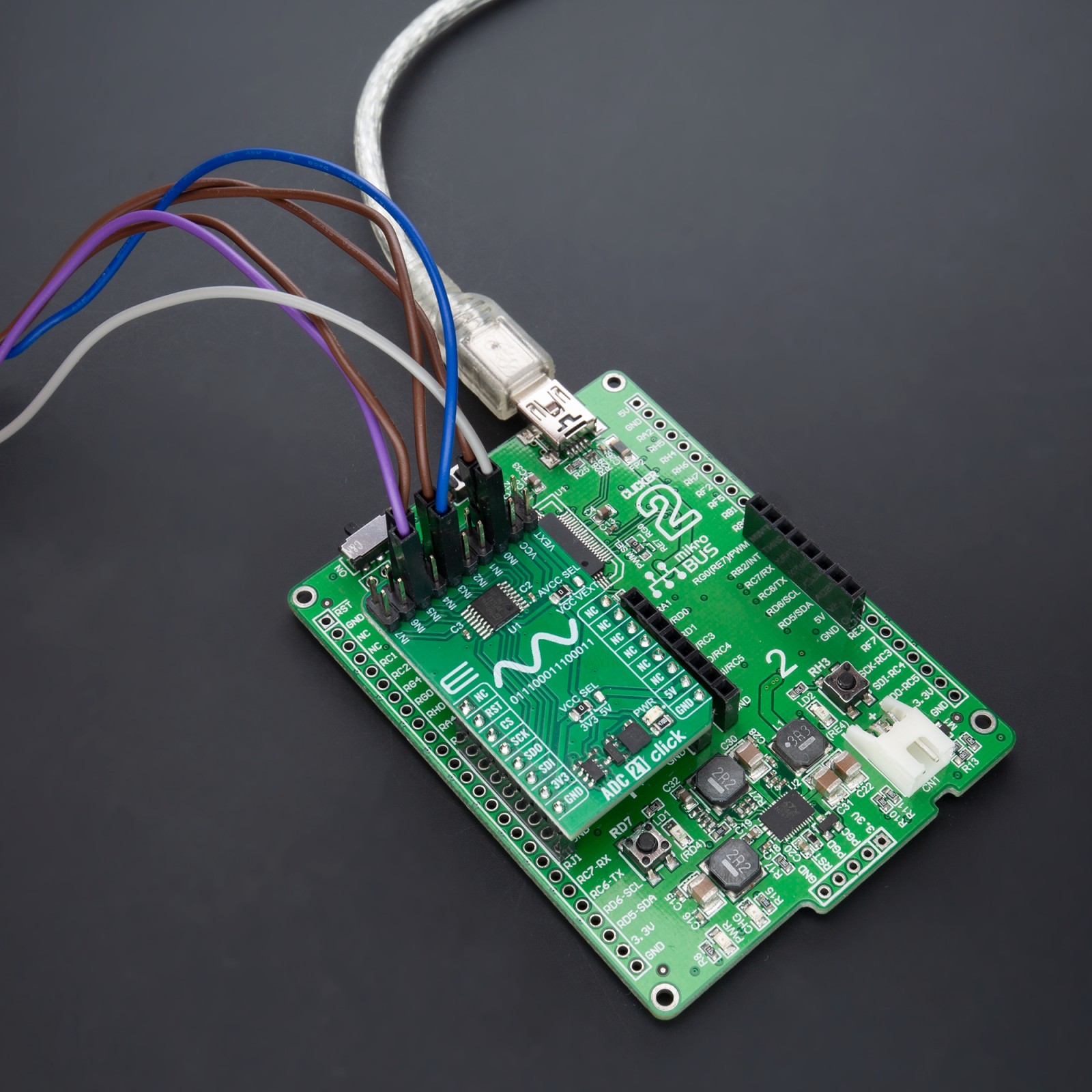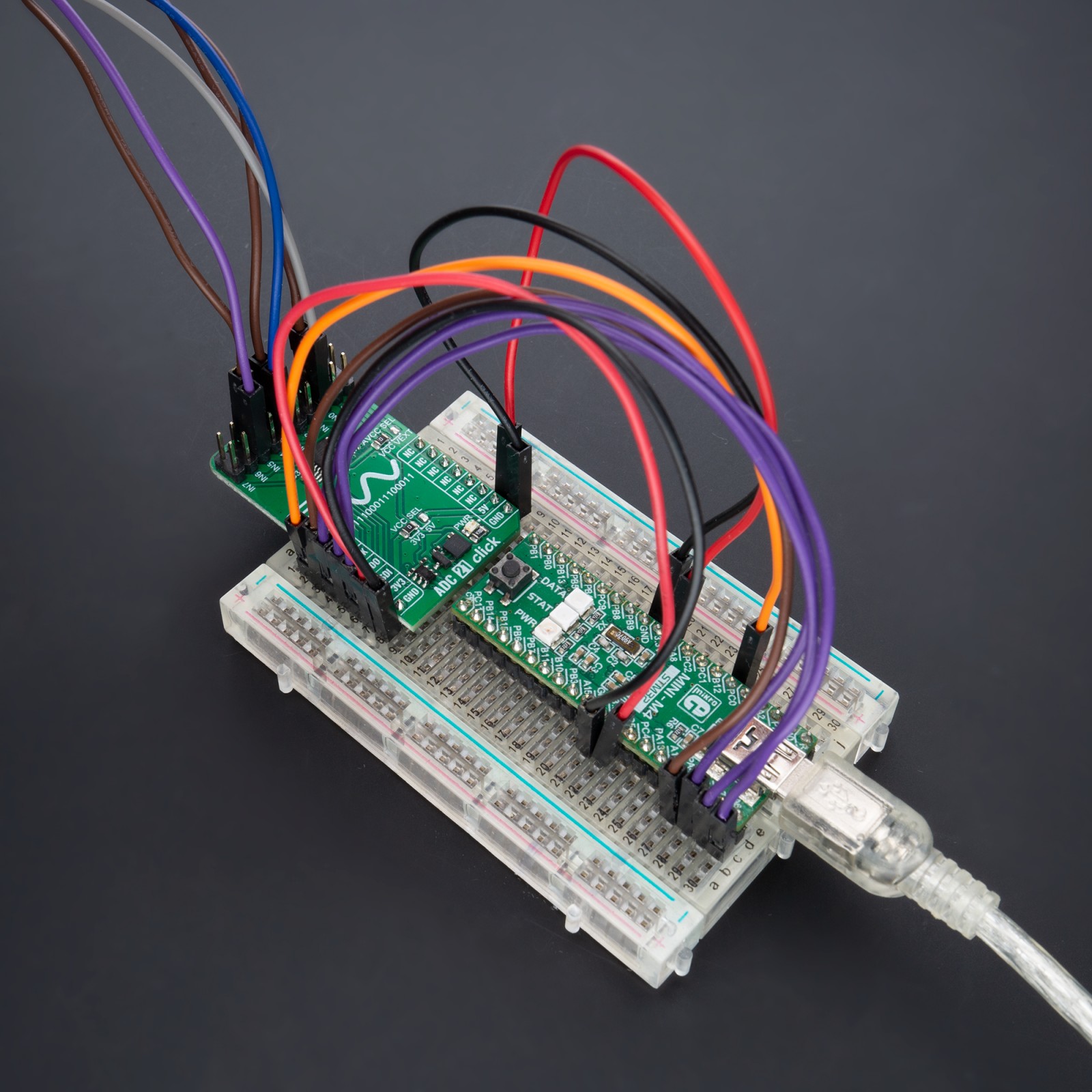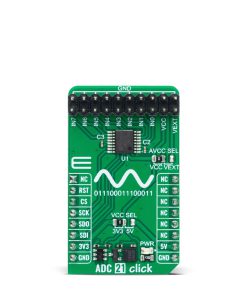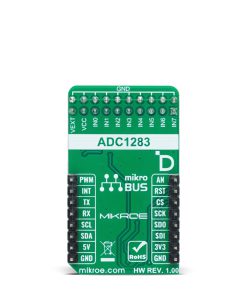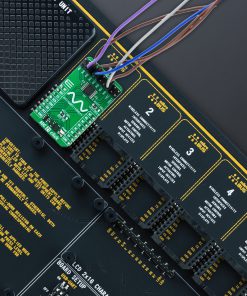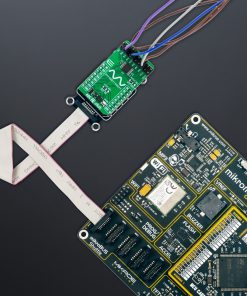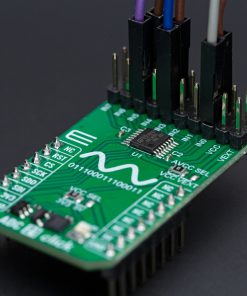ADC 21 Click
R370.00 ex. VAT
ADC 21 Click is a compact add-on board that converts an analog voltage into a digital representation. This board features the ADC1283, a low-power, eight-channel pure CMOS 12-bit analog-to-digital converter from STMicroelectronics. The ADC1283 is specified for conversion from 50ksps to 200ksps. Its architecture is based on a successive approximation register with an internal track-and-hold cell. It features eight single-ended multiplexed inputs, where the output serial data is straight binary and SPI-compatible. This Click board™ offers high accuracy for the most demanding applications, from general-purpose remote data acquisition and instrumentation to industrial applications.
ADC 21 Click is fully compatible with the mikroBUS™ socket and can be used on any host system supporting the mikroBUS™ standard. It comes with the mikroSDK open-source libraries, offering unparalleled flexibility for evaluation and customization. What sets this Click board™ apart is the groundbreaking ClickID feature, enabling your host system to seamlessly and automatically detect and identify this add-on board.
Stock: Lead-time applicable.
| 5+ | R351.50 |
| 10+ | R333.00 |
| 15+ | R314.50 |
| 20+ | R302.66 |


